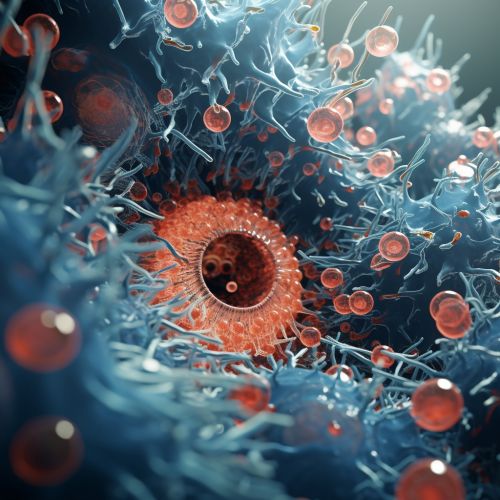Biological Aging
Introduction
Biological aging, also known as senescence, is a complex process that involves the gradual deterioration of biological functions and systems over time. This process is influenced by a combination of genetic, environmental, and lifestyle factors, and is characterized by a decline in physiological function, increased vulnerability to disease, and ultimately, death.
Mechanisms of Aging
The exact mechanisms of aging are still not completely understood, but several theories have been proposed to explain this process. These theories can be broadly categorized into two groups: the damage theories and the programmed theories.
Damage Theories
The damage theories of aging propose that aging is primarily caused by the accumulation of damage to cells and tissues over time. This damage can be caused by a variety of factors, including oxidative stress, DNA damage, and the accumulation of waste products.


Oxidative Stress
Oxidative stress is caused by an imbalance between the production of reactive oxygen species (ROS) and the body's ability to detoxify these harmful molecules or repair the damage they cause. Over time, this can lead to damage to cellular components, including proteins, lipids, and DNA.
DNA Damage
DNA damage is another major factor that contributes to aging. This can be caused by a variety of factors, including exposure to radiation, chemicals, and oxidative stress. Over time, this damage can lead to mutations and genomic instability, which can contribute to the aging process and the development of age-related diseases.
Accumulation of Waste Products
The accumulation of waste products in cells and tissues is another factor that contributes to aging. This can be caused by a decline in the function of the lysosome, a cellular organelle that is responsible for breaking down waste products.
Programmed Theories
The programmed theories of aging propose that aging is a genetically programmed process that is controlled by specific genes. These theories suggest that aging is not simply the result of damage accumulation, but is a process that is actively regulated by the organism.
Genetic Control of Aging
Several genes have been identified that play a role in the regulation of lifespan. These include the sirtuins, a family of proteins that are involved in the regulation of cellular metabolism and stress responses, and the telomerase gene, which is involved in the maintenance of chromosome ends.
Hormonal Control of Aging
Hormones also play a key role in the regulation of aging. For example, the insulin and insulin-like growth factor (IGF) signaling pathways have been shown to play a key role in the regulation of lifespan in a variety of organisms.
Effects of Aging
The effects of aging can be seen at multiple levels, from the cellular level to the level of the whole organism. These effects include a decline in physiological function, an increased susceptibility to disease, and changes in appearance.
Cellular Effects
At the cellular level, aging is characterized by a decline in cellular function, an increase in cellular senescence, and a decrease in the ability of cells to repair damage.
Decline in Cellular Function
As cells age, they undergo a decline in function. This can be seen in a variety of cellular processes, including energy production, protein synthesis, and DNA repair.
Increase in Cellular Senescence
Cellular senescence is a state of permanent cell cycle arrest that is induced by a variety of stressors, including DNA damage and oxidative stress. Senescent cells are characterized by changes in gene expression, morphology, and function, and they contribute to the aging process by secreting pro-inflammatory factors.
Decrease in Damage Repair
As cells age, their ability to repair damage decreases. This can be seen in the decreased efficiency of DNA repair mechanisms, as well as a decline in the function of the immune system.
Organismal Effects
At the organismal level, aging is characterized by a decline in physiological function, an increased susceptibility to disease, and changes in appearance.
Decline in Physiological Function
As organisms age, they undergo a decline in physiological function. This can be seen in a variety of systems, including the cardiovascular system, the immune system, and the nervous system.
Increased Susceptibility to Disease
Aging is associated with an increased susceptibility to a variety of diseases, including cardiovascular disease, cancer, and neurodegenerative diseases.
Changes in Appearance
Aging is also associated with changes in appearance, including the development of wrinkles, graying of hair, and loss of muscle mass.
Interventions to Slow Aging
Several interventions have been proposed to slow the aging process. These include lifestyle interventions, such as diet and exercise, as well as pharmacological interventions.
Lifestyle Interventions
Lifestyle interventions, such as a healthy diet and regular exercise, have been shown to have a positive effect on lifespan and healthspan. These interventions can help to reduce oxidative stress, improve cellular function, and delay the onset of age-related diseases.
Pharmacological Interventions
Several pharmacological interventions have been proposed to slow the aging process. These include drugs that target the sirtuins, the insulin/IGF signaling pathway, and the mTOR signaling pathway.
